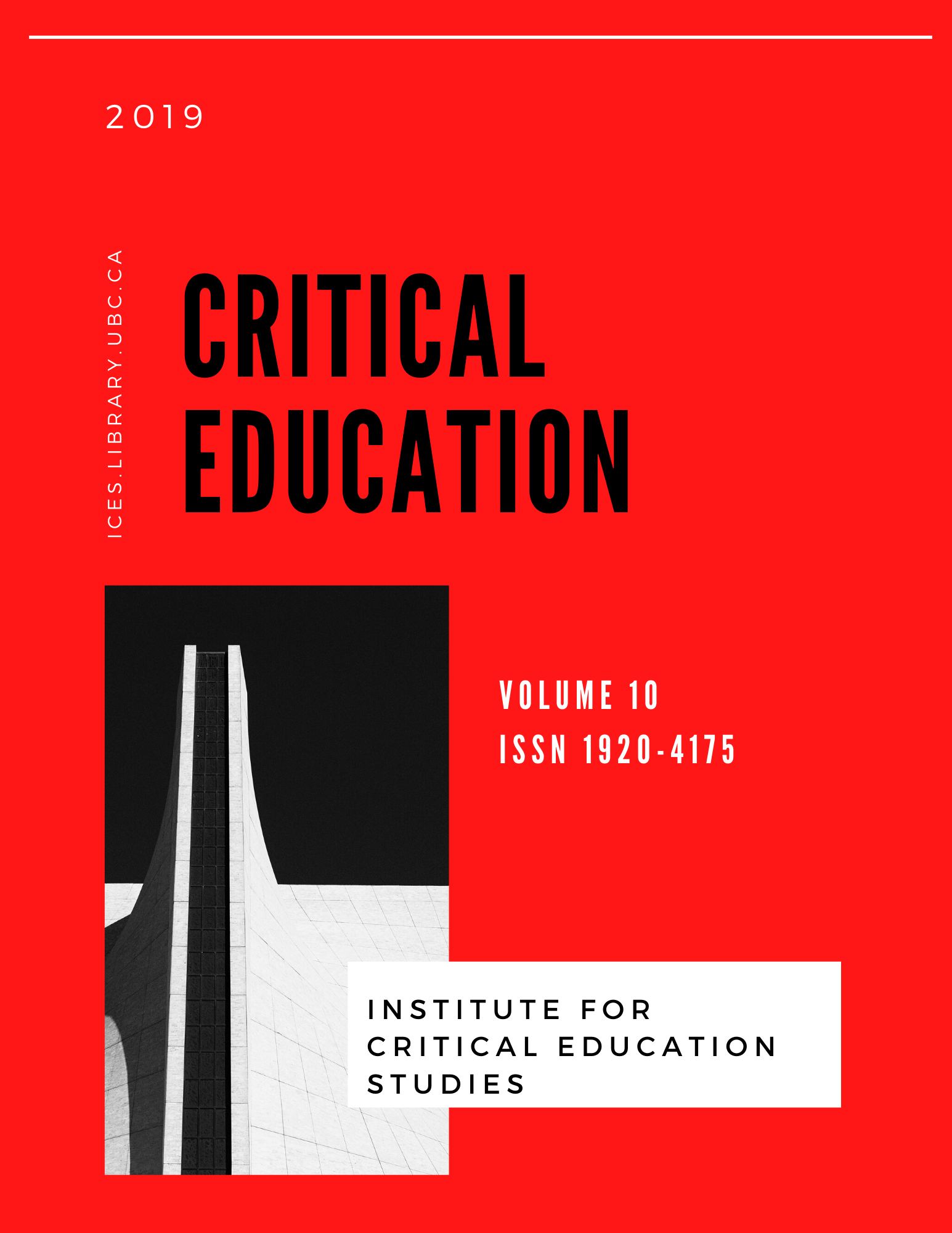Assessing the “Education Debt”: Teach For America and the Problem of Attrition
DOI:
https://doi.org/10.14288/ce.v10i11.186423Keywords:
Teach For America, teacher attrition, “education debt”Abstract
With this paper, I explore the impact of teacher attrition on Teach For America’s (TFA) ability to produce more long-term, systemic educational change. I do so via my application of critical race theory and Gloria Ladson-Billings’ concept of the “education debt” to TFA’s consistently high rates of attrition. I begin with a general discussion of long-term educational change, paying particular attention to how and why teacher attrition matters. Next, I present the four components of Ladson-Billings’ (2006a) conception of the “education debt,” after which I explore just one factor that I believe may prevent the realization of TFA’s goal of ending educational inequity (teacher attrition) in both practical and moral terms. Using critical race theory as an additional level of analysis that is consistent with Ladson-Billings “education debt” framework, I conclude that TFA’s concrete materiality falls short of its intention to end educational inequity, especially concerning the longevity of its recruits. This, I contend, suggests the need for educational resources to be equitably redistributed, in part, via high quality educators for our most under-served youth populations, including those currently taught by TFA.
Downloads
Published
Issue
Section
License
Authors who publish with Critical Education agree to the following terms:
- Authors retain copyright and grant the journal right of first publication with the work simultaneously licensed under a Creative Commons Attribution License that allows others to share the work with an acknowledgement of the work's authorship and initial publication in this journal.
- Authors are able to enter into separate, additional contractual arrangements for the non-exclusive distribution of the journal's published version of the work (e.g., post it to an institutional repository or publish it in a book), with an acknowledgement of its initial publication in this journal.
- Authors are permitted and encouraged to post their work online (e.g., in institutional repositories or on their website) prior to and during the submission process, as it can lead to productive exchanges, as well as earlier and greater citation of published work (See The Effect of Open Access).








